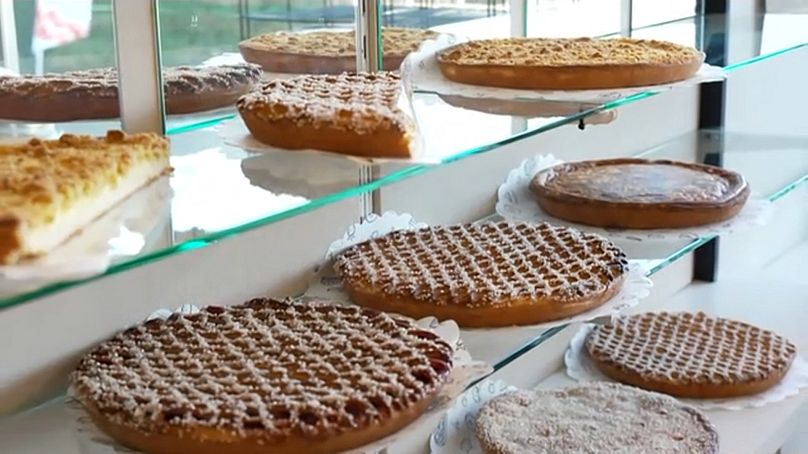Attention pastry lovers! Vlaai pie is officially Limburgish. From 22 January, pie from Limburg will have the protected geographical indication (also known as the PGI label).
After more than seven years of sweet-talking, Limburg pie from Dutch and Belgian Limburg has gained official recognition as a protected regional product by the European Union.
Much like serrano ham, Champagne, or the rich Modena balsamic vinegar, numerous food products and beverages enjoy protection when their distinctive attributes are intrinsically tied to the particular place of their creation.
Limburg pie is the latest confectionary to join this exclusive club.
Effective from 22 January, the Protected Geographical Indication (PGI) label will designate these delicious pastries, ensuring adherence to specific baking processes and appearances.
Oversight will be provided by the Dutch Food and Consumer Product Safety Authority, imposing fines for rule violations.
To celebrate the pie's new found recognition, here's a guide on everything we know about the scrumptious pastry.
What is Limburg pie?
Limburg pie, commonly known as vlaai, is a sweet, golden-brown baked delight comprising a crème pâtissière filling generously topped with streusel (crumbly topping).
It comes in a variety of fruity flavours, including cherry, apricot, strawberry, and plum.
The uniqueness of the vlaai lies in its soft dough, distinct from traditional puff pastry or shortcrust pastry; instead, it boasts a softer dough made with yeast. It's generally less rich than typical shortcrust pastry or puff pasty, containing comparatively less butter.
Vlaai is generally not very deep, and measures between 26 and 30 cm.
What is the pie's origin?
The origins of Limburg pie remain shrouded in mystery, but one legend traces the baked good back to the 12th century, during a siege led by Duke Henry van Leuven.
According to the 1503 chronicle of the abbey of Sint-Truiden, townsfolk presented the Duke with a pastry named "Plăcintă," prepared using ancient local recipes, ultimately swaying him to abandon the siege. Despite Plăcintă's link to the Middle Dutch word "vlade," there are still uncertainties about the precise nature of the baked goods offered.
The 15th-century Middle Dutch cookbook "manuscript Gent KANTL" adds to the debate, listing various "vlade" fillings resembling fruit or custard, coupled with a hot water crust pastry recipe.
By the 20th century, vlaai could be commonly found in the Netherlands but were considered a luxury confectionary reserved for celebrations. Typically served around four in the afternoon during the coffee break, people would enjoy two or three different slices per person.
What does the pie represent to residents of Limburg?
Limburgse Vlaai holds a special place in the hearts of the Dutch people, especially those residing in or visiting the Limburg region.
"Limburgse Vlaai brings people together. It is a symbol of being together as a family on good and bad days. When we have something to celebrate or something to commiserate," Jo Brouns, the Flemish Minister of Agriculture and Food, told The Brussels Times.
Traditionally enjoyed during festive occasions such as birthdays, weddings, and holidays, the pie has become a staple on dessert tables across the Netherlands.
“When you say Limburg you basically say Limburg pie in the same breath, just like with Brabant you say Brabant sausage roll. That belongs to that province. And this product belongs exclusively to the province of Limburg," states baker Marcel Roubroeks, who was a prominent advocate for the recognition of Limburg pie by the European Union.












